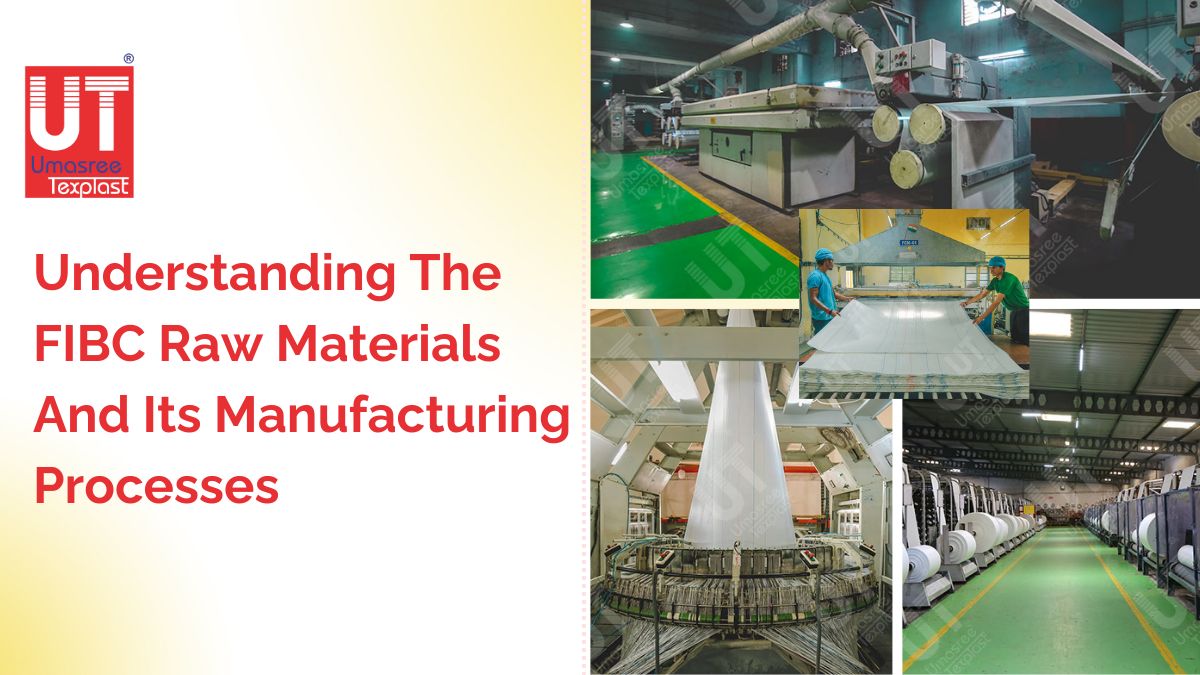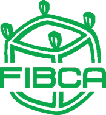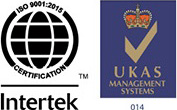Understanding The FIBC Raw Materials And Its Manufacturing Processes

Understanding The FIBC Raw Materials And Its Manufacturing Processes
Bulk bags sometimes referred to as big bags or FIBC bags (flexible intermediate bulk containers), are extensively utilized in a variety of industries for the storage and transportation of bulk goods. These bags are widely recognized for their resilience, adjustability and affordability. To guarantee quality and performance, it is essential to comprehend the raw materials and production techniques utilized in FIBC manufacturing. We’ll explore the FIBC raw materials and manufacturing methods in this extensive overview, illuminating the essential elements and procedures involved.
Raw Materials for FIBC Manufacturing
Several raw materials are used in the creation of FIBC bulk bags, each of which adds to the overall strength, flexibility, and utility of the finished product. The following are the main raw materials utilized in the production of FIBCs:
Polypropylene Resins
The main raw materials used to make FIBC are polypropylene resins. These thermoplastic polymers have a stellar reputation for durability, chemical resistance, and tensile strength. To make the bulk bag’s body, PP polymers are melted, then extruded into flat tapes or yarns that are woven into textiles and undergo additional processing. Because of its inherent qualities, polypropylene is the best material to use in situations where strength, flexibility, and chemical and moisture resistance are required.
UV Stabilizers
The polypropylene resin contains chemicals called UV stabilizers that improve the bag’s resistance to ultraviolet (UV) light. Over time, exposure to sunshine can deteriorate the material and jeopardize the FIBC’s integrity. By lessening the impacts of UV exposure, UV stabilizers assist in extending the bags’ lifespan and make them appropriate for outdoor use.
Calcium Carbonate
By incorporating calcium carbonate into the bag material, it can act as an anti-fibrillating agent, helping to minimize or prevent the formation of fine fibers. This is particularly important for maintaining the structural integrity and overall performance of the FIBC bags, ensuring that they meet the necessary standards for strength, durability, and safety during use.
Anti-static Additives
Anti-static additives may be added to the polypropylene resin in situations where static electricity is a concern in order to reduce the accumulation of static charges. When working with products like chemicals, electronics, and powders, where electrostatic discharge (ESD) can cause product damage or safety risks, anti-static FIBC is crucial. By ensuring that the bags securely disperse static charges, these additives help to minimize any possible problems related to static electricity.
Colorants and Pigments
Colorants and pigments are mixed with polypropylene resin to provide the FIBC color and aesthetic appeal. Colorants are mostly used for aesthetic purposes, but they can have functional uses including branding and product identification. A vast variety of colors and designs are possible with colorants since they can be tailored to match particular needs and preferences. To guarantee that the colors stay brilliant and fade-resistant even when exposed to sunshine, colorants may also have UV-resistant qualities.
Manufacturing Process of FIBC Bags
Several unique procedures are implemented in the production of FIBC, ranging from weaving and extrusion to cutting, sewing, and finishing. Every stage is meticulously carried out to guarantee the creation of dependable, high-quality FIBC bulk bags. The main manufacturing procedures used in the creation of FIBCs are as follows:
Extrusion Tape Lines/Polypropylene Resins
Extrusion of polypropylene resins is the first step in the production of FIBC. To create flat tapes, these resins are melted and then extruded through a die. The material’s uniformity and consistency are ensured by this extrusion process, which also supplies the strength and flexibility required for the creation of FIBC bags.
Weaving of Fabric and Tapes
On specialized weaving machines, the extruded tapes are subsequently woven into cloth. The individual tapes are interlaced throughout the weaving process in both the warp and weft orientations, producing a robust, flexible fabric with a unique woven pattern. It is possible to modify the fabric’s density and weave pattern to satisfy certain needs for weight, strength, and breathability.
Lamination and Coating
To improve its performance qualities, the woven cloth may occasionally go through coating or laminating procedures. Lamination is the process of adding a layer of film to one or both sides of woven fabric in order to increase barrier, moisture resistance, or strength.
Tape Twisting for Stitching
Following the production and processing of the woven fabric, the fibrillated tapes may be twisted in preparation for stitching. The tapes are strengthened and made more durable by this twisting process, which guarantees strong stitching and reinforced seams in the finished FIBC product. The panels are then sewn together to create the bag’s body using the twisted tapes.
Finishing
To guarantee its quality and functionality, the FIBC goes through a number of finishing procedures which includes cutting, printing and sewing. Once sewn, each bag is inspected for any possible quality defect. All approved bags are then packed & shipped in containers to the client.
Quality Test & Adherence to Regulatory Standards
After the bag is crafted with premium materials and a top-notch manufacturing process, it’s time for testing and adhering to regulatory standards. Several quality tests are being performed on FIBC bags to ensure compliance, these include:
- UV Resistance Test
- Mechanical strength
- Elongation
- Load Test
Conclusion
In order to guarantee the quality, functionality, and dependability of FIBC bags, it is crucial to comprehend the raw materials and manufacturing procedures used in FIBC manufacturing. The main component is polypropylene resin, which is strong, flexible, and resistant to chemicals.
The longevity, aesthetic appeal, and safety characteristics of the FIBC bulk bags can be improved by adding UV stabilizers, colorants, and anti-static additives. Strict quality control procedures are used throughout the manufacturing process, which includes extrusion, weaving, laminating, cutting, stitching, and finishing.
At Umasree Texplast, we ensure that high-quality FIBCs are produced that satisfy the varied needs of different industries. Businesses may choose the best packaging solutions for their unique needs by learning more about the FIBC production process and making educated decisions with the help of our experts. Contact us today at +91 7935336805 or email us at mail@umasree.com





